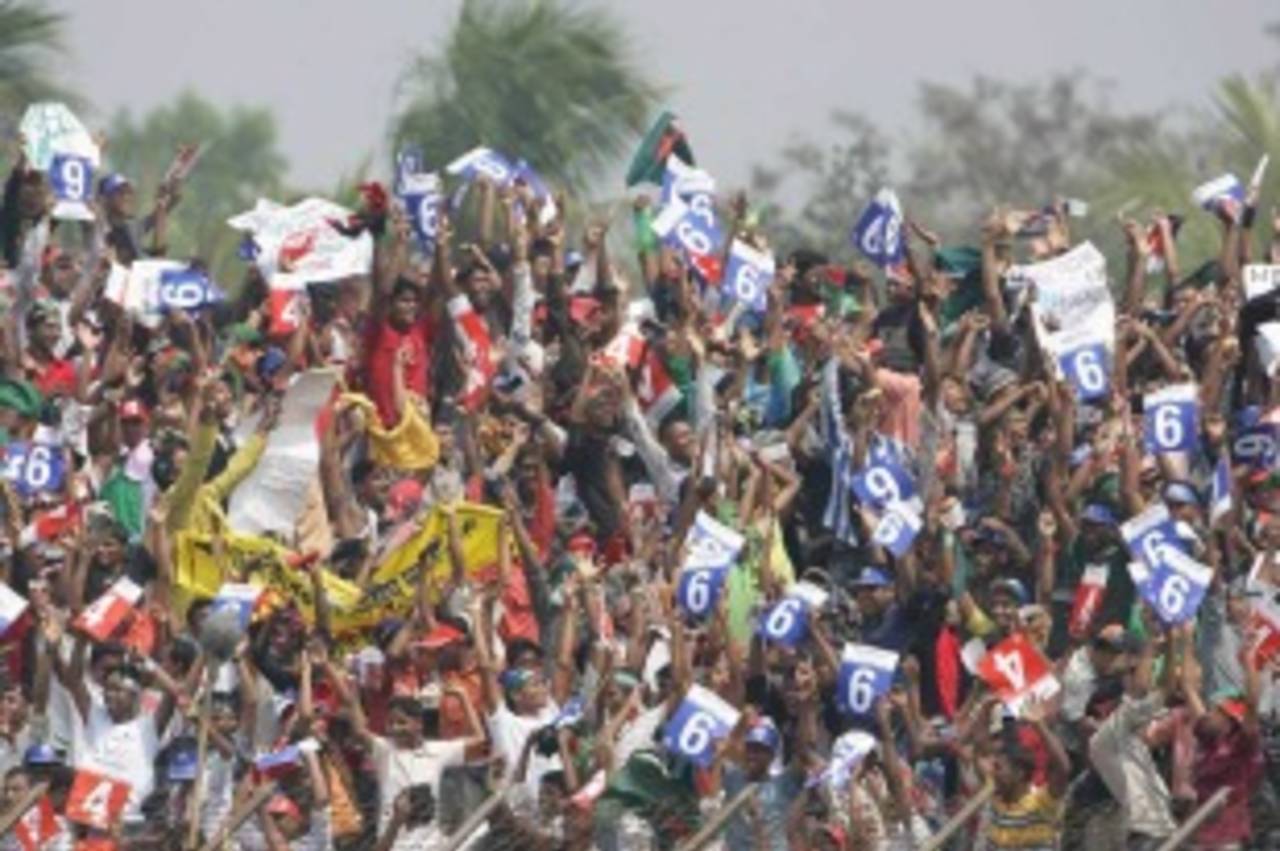Cool like Chittagong
Everything's quick, but everyone's chilled out - what's not to like?
Sidharth Monga
19-Nov-2010

Chittagong: laidback, except when the cricket's on • Getty Images
My abiding memory of Chittang (that's what the locals call it) is from the basement restaurant of the "budget hotel" that I was staying in, the Tower Inn. It was the year 2007, and Bangladesh were basking in what had been a fairly successful World Cup campaign in the West Indies. Tamim Iqbal and Shakib Al Hasan, 18 and 20 then, had left their posh team hotel and come to the basement of mine, to host a dinner for friends. Tamim says he likes the food there.
It was a group of about 10, loud, enjoying the meal, looking no different from a bunch of young college - or even school - students, enjoying a meal out of their pocket money. Soon, out of nowhere, came cameras of Indian news channels. It was great television for them. They shot the food, they spoke to the players, they spoke to the friends. I noticed then that Shakib, two years the older, was embarrassed by it all, while Tamim seemed cool with it. Sure of himself, quietly confident, unflustered - much like his cricket, much like his beloved home, Chittagong.
Unlike Dhaka, Chittagong likes to move fast, talk fast, in a dialect quite different from the Bengali spoken in Dhaka (Chittang, you see), but still maintains the coastal laidback air. Auto-rickshaw drivers operate as if in a video game. Strangers walk by you in Agrabad area, whispering in your ear, "Dollar, dollar", offering to buy or sell foreign exchange. Go to the seaside, though, and there isn't much to be bothered by.
The two Bengali symbols, the chaata (umbrella) and the adda (place for idle chatter), I saw aplenty. It's easy to become part of the addas, as I realised during long a chat about nothing in particular with a senior local journalist, who would try to speak Hindi to make me feel included. That was 15 minutes after I arrived in the city.
Chittagong is a city with a fair share of foreigners, Indians, Pakistanis, who didn't quite respect the two partitions. There are "Hindu" restaurants. Tamim's parents are from Patna, Akram Khan's from Uttar Pradesh.
The press box here is ideal too: covered overhead, providing shelter from the sun, but open in front, not denying you the sounds of cricket: the nicks, the clean connections, the celebrations
I remember Chittagong as a beautiful city, Chittagong Hills on one side, and the Bay of Bengal on the other. And because I was there during a rainy spell, it all looked greener than usual. I remember often listening to two songs by State of Bengal, a British DJ of Bangladeshi origin: "Chittagong Chill" and "Flight IC 408". They are fusion sounds - more electronic than Asian, but Asian enough to be a part of a compilation album called Anokha - Soundz of the Asian Underground. I wondered if State of Bengal had Chittagong on his mind when he did, or named it, "Chittagong Chill". Not least because it was a week of incessant rains, making the place, well, chilly, in May. "Flight IC 408" stayed with me for longer: it has clearly been an inspiration for an AR Rahman song and also been used as montage music by an Indian music channel. I recently searched the Air India website to find out that Flight IC 408 flies between Patna and Delhi, as opposed to the captain's announcement in the song, which says they are ready to fly to Kolkata.
Chittagong is a proud city, well known for the uprising against the British Raj and its resilience against the strong Pakistani forces in 1971. The cricket stadium used to honour one of the martyrs of the 1971 war, Bir Shrestho Ruhul Amin, before it was renamed the Zohur Ahmed Chowdhury Stadium. I prefer this ground to Mirpur's modern specimen, with its air-conditioned press box and commendable drainage system. This place is more intimate, gets you involved more, even though its proximity to the sea doesn't quite help the drainage. The press box here is ideal too: covered overhead, providing shelter from the sun, but open in front, not denying you the sounds of cricket: the nicks, the clean connections, the celebrations. I don't think I will forget how Mashrafe Mortaza bowled Wasim Jaffer with an inswinger ("because they always expect outswingers from me") first ball of the Test, and went on a mad football-style run to celebrate.
The locals, though, don't seem to like the stadium that much. For starters there is very little shade for the crowds. At least there wasn't much when I was there: they could have done renovations with the World Cup in mind. And they also seem to love the MA Aziz Stadium more, which is right in the middle of town and is the venue of Bangladesh's first Test win.
The clincher for me, though, is the view from the top tier of the new stadium. Not too far is the Bay of Bengal. The sea is often calm - at least it stayed so during my stay of more than a week, even when it rained almost every day. The sort of calm Jason Gillespie displayed during his double-century in the Test before. A "sleeping beauty emerging from mists and water", Huen Tsang called Chittagong.
Sidharth Monga is an assistant editor at Cricinfo